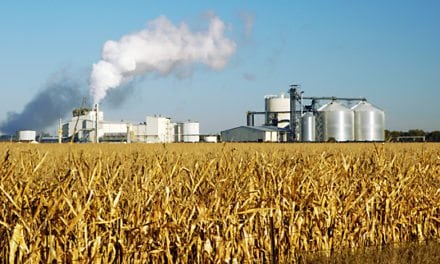By Keith Reid
Way back in 2012, the hottest buzz at most of the trade shows with an audience interested in commercial fueling was the conversion from diesel to compressed natural gas (CNG). This was certainly a market-driven phenomenon due to the fact that the price spread between diesel and natural gas during the buzz period was up to $2 per energy equivalent gallon in favor of natural gas. The return on investment for the conversion costs, which are not insignificant, was starkly clear.
Today, of course, the price differential between the two fuels is quite different. The fracking process that so significantly dropped the price of natural gas has similarly impacted oil prices and the resulting refined fuels. In April of 2014, diesel prices began to drop, and in January 2016, both fuels were at price parity. By April 2016, compressed natural gas was—with the exception of the Central Atlantic—about $0.15 more expensive. Since April, diesel prices have rebounded and natural gas prices have remained generally the same, and CNG is once again enjoying a reasonable $0.20 or more market advantage.

Historical Compressed Natural Gas Prices vs. Diesel (click to enlarge)
In this environment, the push for a mass conversion from diesel to gas has certainly been reduced. And yet with some regularity, including the periods where the price was unfavorable, there have been announcements of new natural gas fueling facilities being opened and additional fleets being added to the list of CNG customers. For a marketer considering the move into natural gas—for this article, CNG and not liquefied natural gas (LNG)—just how viable is this solution today?
“Several years ago, folks were projecting about anywhere between a 1.5% and 2% growth in new truck sales for CNG,” said Bill Zobel, General Manager of Business Development and Marketing for fueling provider Trillium CNG. Trillium was recently acquired by Love’s Travel Stops & Country Stores to enhance its already-developing commercial CNG initiatives. “As the fuel prices dropped off, we haven’t really seen much growth in the market, but more of a steady pace at the same build rate that they’ve had before. It’s enough to keep the market stimulated. It’s enough to keep it moving forward.”
From a price perspective, there is again a positive message, though certainly not the overwhelming one of previous years. “CNG is less expensive pretty much universally throughout the country,” said Grant Zimmerman, CEO of CNG fueling station operator and fuel provider ampCNG. “And in places where diesel tends to be more expensive, like on the coast, there’s a big differential. When you factor in things like state incentives, the payback for CNG can still be less than a year in some instances.”
Another cited advantage with CNG is greater price stability. The domestic nature of natural gas, along with its abundant supply through fracking, tends to insulate it from global market issues. Although oil has become notably less volatile than it was during the first decade of the 2000s, also through similar fracking-related supply benefits, its movement tends to me more significant.
“With natural gas you have much more price stability, where [a fleet customer] feels comfortable that they can make the move,” said Bill Renz, General Manager of U.S. Gain, a CNG station operator and fuel supplier and a division of U.S. Venture, Inc. “They know where their costs are going to be into the foreseeable future. Oil…could it go lower? Yeah, but most folks in the industry and in transportation feel it is going to go back up.”
While Renz doesn’t anticipate $100 per barrel oil anytime soon, nor do most analysts in the industry, oil moving up over time into the $50 – $70 range is a common assumption which improves the long-term CNG price perspective. “From a lot of these fleets’ and shippers’ perspectives, they’re fine making the move now, knowing that they’ve got price stability and knowing that more than likely in the next few years, those more significant savings will be there,” Renz said.
Beyond price, there are other incentives driving fleet conversions, most specifically carbon reduction. This encompasses brand enhancement efforts focused on sustainability and is facilitated by various economic incentives. However, at the end of the day, the green that matters most is the color of the dollar.
“I think [the environment is] important to people. I think that’s why they start the discussion, but that’s it,” said Zimmerman. “But even people with a big mandate have to make the economics work, and if the economics don’t work it doesn’t matter how green it is. You’re only going to get so far.”
Today’s Fleet Customer
CNG fueling providers generally noted that, while the rush of interest in the fuel has slowed, the expansion of fleets already committed to the fuel continues.
“The fleets that haven’t done CNG so far are taking a little longer to buy the first truck,” Zimmerman said. “But the guy who’s thinking about his fortieth truck, or hundredth truck, or two hundredth truck is moving ahead as fast as they were. I’ve done some analysis that says if this market continues at the current pace, we’ll have three times as many trucks on the road in just a few years as we have today.”
Next Page (Click Below)








